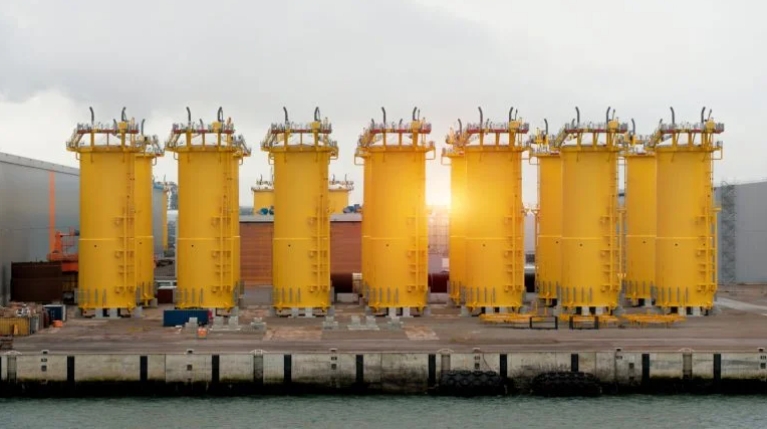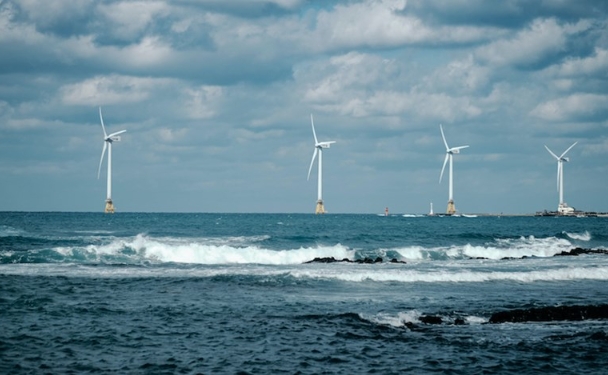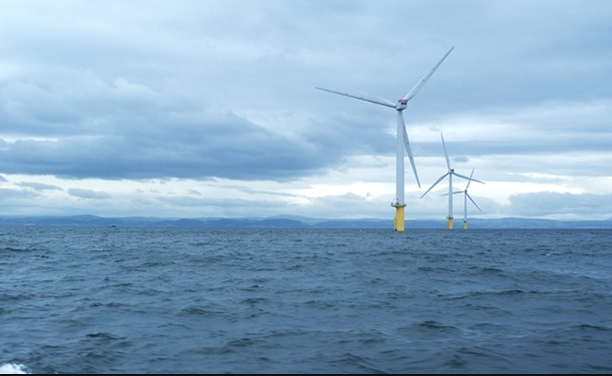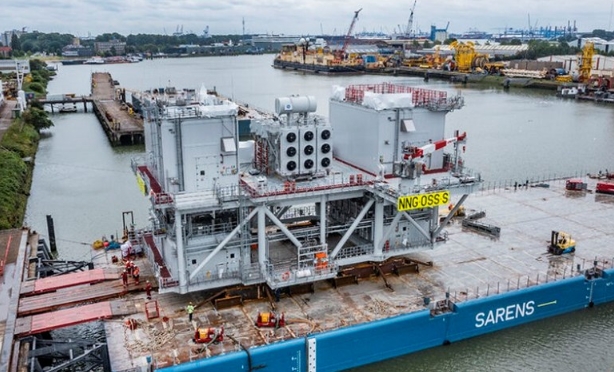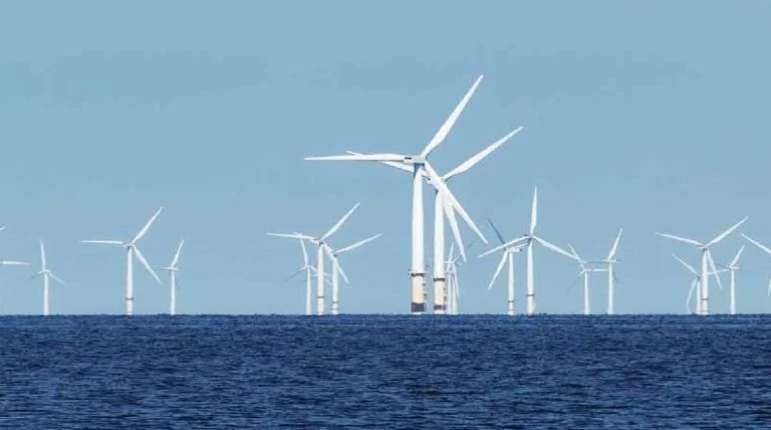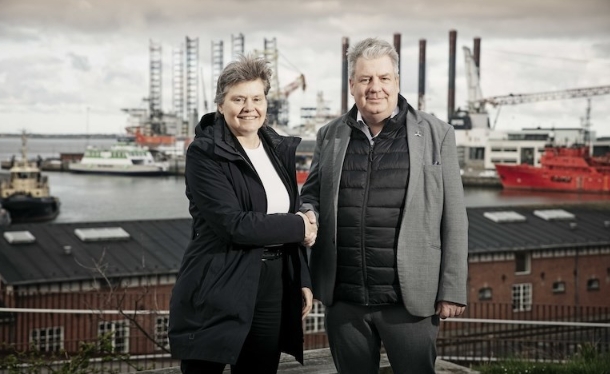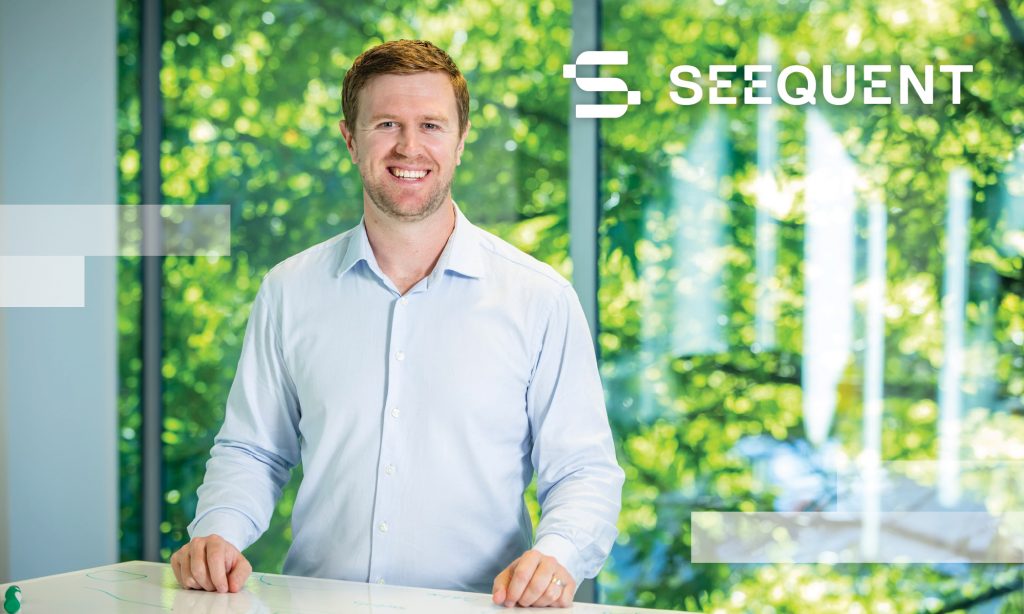 Interview with Jeremy O'Brien, Segment Director - Energy of Seequent (source: Seequent)
Interview with Jeremy O'Brien, Segment Director - Energy of Seequent (source: Seequent)We sat down with Jeremy O’Brien, Segment Director-Energy of Seequent, to hear his views on how the geothermal industry has evolved in the past years and the direction that the industry is taking in the future. Jeremy also gave us his insights on how emerging technologies inform the strategy of Seequent, particularly in the face of a rapidly evolving geothermal industry.
Seequent has been a part of the global geothermal industry for about a decade now, but it would be nice to have an introduction for our readers. What is Seequent’s role in the overall geothermal industry?
Seequent is one of the leaders, and probably the leader in the subsurface technology in geothermal. We have been servicing the market since 2012 with Leapfrog Geothermal, which is used for geo-modelling and helping people plan their wells better. It also helps people understand the geothermal resources better, thus improving its management, through downstream tools for simulating reservoirs and assessing their performance.
In 2018, we acquired Geosoft along with the Oasis Montaj tool suite, which is used for geophysical analysis. This acquisition has broadened our horizons. Since then, we have also added cloud technology for data and model management with a product called Central, which is now widely used in the geothermal industry for communication, storage, management, and visualization of data. This is all done in the cloud, so users don’t need complex software or hardware.
In terms of what we are doing with geothermal today – approximately 65% of all geothermal power generated globally is supported by Seequent technology in one way or another. That does not yet include the consultants, organizations doing exploration work, and those in the mineral exploration, civil construction, and environmental markets, which we also support.
What would you say have been the biggest changes in the geothermal industry and how has Seequent responded to those changes?
I think some of the big changes in the past decade has been the focus of organizations to be more efficient and to try and get more out of their budgets with the constraints that they have. By that, I’m talking about the more traditional, high-temperature geothermal markets such as those in the Philippines, New Zealand, Indonesia, and the western states in the US.
The direction for these organizations is to try and find technologies and different ways of working that enables them to get more out what they do, such as how they can drill faster or target better. One observation I have is that the geothermal industry has adapted workflows where best practice become really important. This includes not just the use of technology, but simple things like ensuring that conceptual modeling is consistent and takes into account other use cases, such as those applicable in other parts of the world.
What I have seen in the last 10 years is the integration of technologies from adjacent industries into these best practices that have been established by the geothermal industry. Leapfrog is an example that came from the mining industry. Other technologies from oil and gas have come into the geothermal environment, helping people innovate and change.
The other observation I have made, particularly in the last four or five years, is the increased urgency towards addressing climate change. This has also changed how the geothermal market has been viewed. Previously, it was seen as this niche industry which can develop in areas with volcanoes or hot springs.
The meteoric push that geothermal has received can be seen in the exploration of sedimentary basins or other areas which traditionally have not been explored. Geothermal projects are being developed for heating, direct use, and mineral extraction. What we are starting to see is a real drive towards looking at other ways in which geothermal can be used to offset carbon emissions.
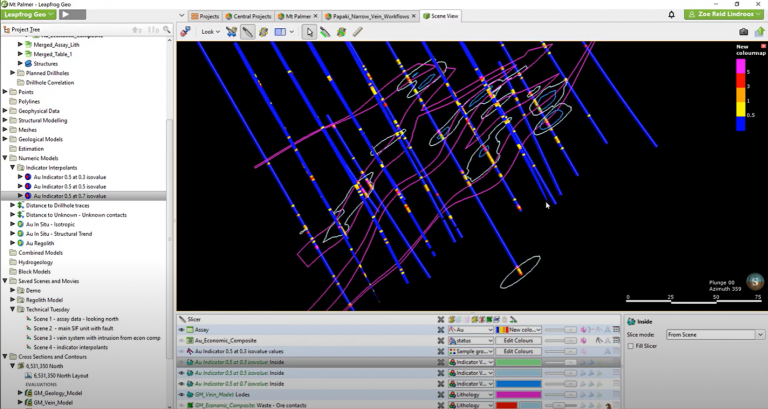
Part of the background of Seequent is a long history in groundwater projects. We released a version of Leapfrog for the groundwater market at around the same time that we released Leapfrog Geothermal. The shallow subsurface is actually somewhere we are really competent in.
Some of our users in countries like Iceland already have Leapfrog models running for shallow geothermal around deeper resources. We also have public case studies looking for shallow geothermal resources in Spain for heating and cooling.
This also ties in into our acquisition of Geosoft Oasis Montaj. This isn’t necessarily just for shallow environments, as it can be used for imagery in traditional geothermal exploration areas. We have co-authored a paper with the Clean Air Task Force and Philip Ball, and are also presenting a study on the use of gravity and magnetics to look at deep geothermal resources in Canada.
We are also seeing this technology applied in shallow sedimentary basins in the likes of US and other places in Europe where people want to understand the geology and don’t normally have all the imaging you would normally have in a high-temperature geothermal environment. We’re seeing kind of all aspects of geothermal development, including alternative uses such as the lithium extraction project of Cornish Lithium.
With AI being the up-and-coming technology nowadays, how do you think will AI influence the field of geothermal modeling?
AI will have an influence on modeling, for sure. It’s already having an influence in oil and gas, and in mining, which means clearly that we will see its effect on geothermal eventually.
I think machine learning and AI are two separate things but are also trends that we are starting to see a lot of interest in. Last year, Seequent made an acquisition of a company called AR2Tech which deals with uncertainty and geostatistics. In the next couple of years, we are looking into bringing that sort of technology into the cloud.
We are developing a platform called Seequent Evo which will enable users to more seamlessly integrate things. That is where machine learning and AI could be enabled. We are observing this trend and we’re looking at it seriously because this is the future of a lot of what we do.
What do you think Seequent’s role will be in future geothermal projects that utilize emerging technologies like closed-loop systems, supercritical systems, ultra-deep geothermal, or EGS? With these new types of geothermal systems being developed, what is Seequent planning to do to remain relevant?
As I mentioned before, we have published a paper with the Clean Air Task Force on exactly this, looking at Canada’s deep, high-temperature resources using our geophysics product.
We also have applications in EGS. The most highlighted one would be the Utah FORGE project where Leapfrog has been used as a modeling tool. Our cloud technology Central has been used to share and provide links to information on the project. We also have customers in parts of Europe who are developing EGS projects and have our tools front and center of what they are doing.
As I said before, we are also seeing low-temperature applications whether using closed-loop or near-wellbore technologies.
We are positioned quite nicely in those markets because one of our biggest things is that we like to collaborate and work with industry partners to make sure that we understand the trends as they are arriving. I like to think that, as we move forward, the tools in our portfolio will become increasingly relevant in those markets as they evolve.
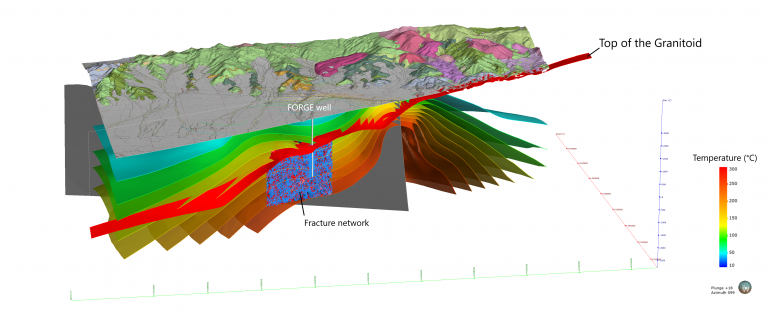
Seequent is partnering with the Utah FORGE (Frontier Observatory for Research in Geothermal Energy) project to research enhanced geothermal systems. Image is of the temperature distribution and fracture network at the FORGE Milford site visualised in Leapfrog. More info: https://www.seequent.com/the-utah-forge-project/
What are you looking forward to in the geothermal industry in the coming five or ten years? What makes you think this industry is still exciting?
I see things coming full circle at the moment with all the Net Zero efforts we need to slow down the effects of climate change. With the understanding now that we need all the resources we have to make a swift energy transition, I think geothermal becomes more and more competitive.
I think the example of Munich, where district heating can primarily be provided by geothermal, is exciting. That use case can help push along similar projects across Europe. I see sedimentary basins in the US and the application of latently hot fluids providing heating offsets and providing low-emissions baseload energy.
I think a lot of the geothermal industry have known this, but it’s kind of like a hidden secret in the energy market that when you do the numbers, geothermal has relatively low costs even compared with alternatives like solar and offshore wind. Aside from energy, geothermal energy also brings long-term economic benefits around the communities it operates in, such as jobs. Now we see things like mineral extraction, potentially associating geothermal with ethical minerals.
That is a long-winded way of my saying that I don’t think equitable energy transition exists without geothermal being at least a significant part of it.
